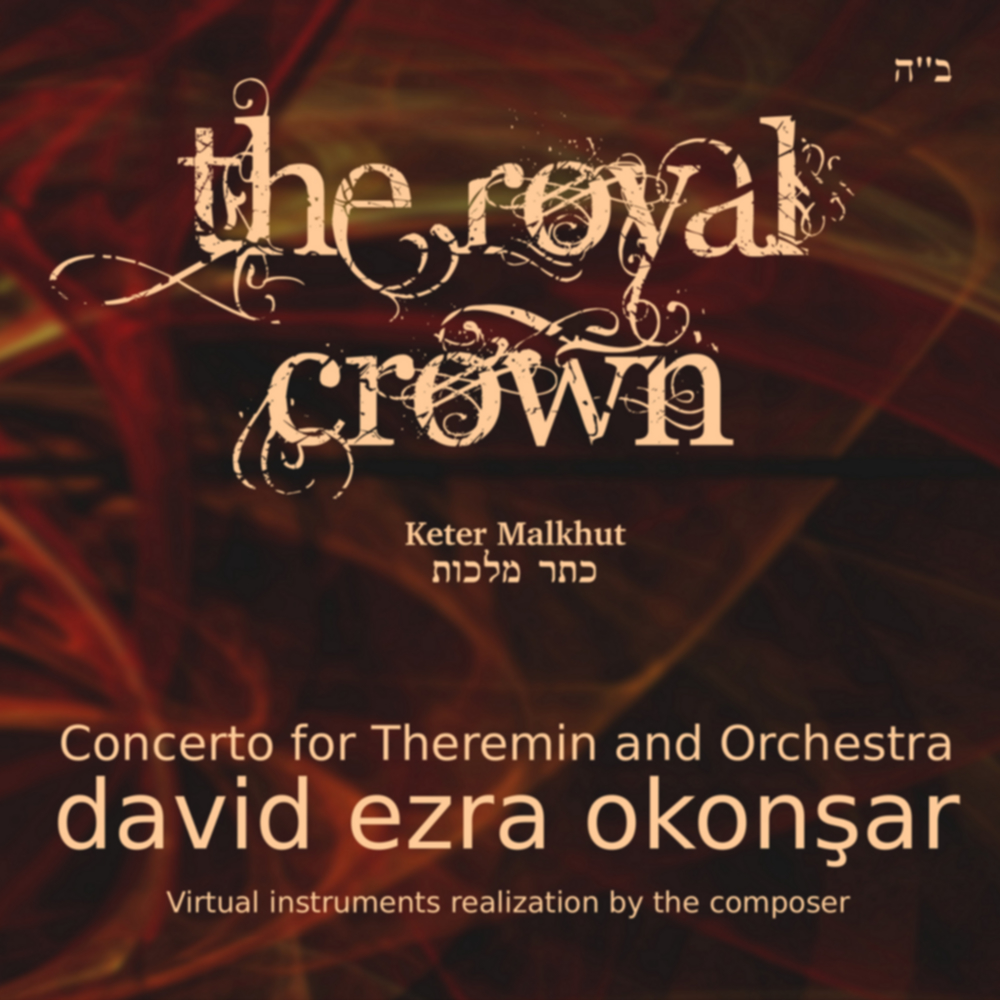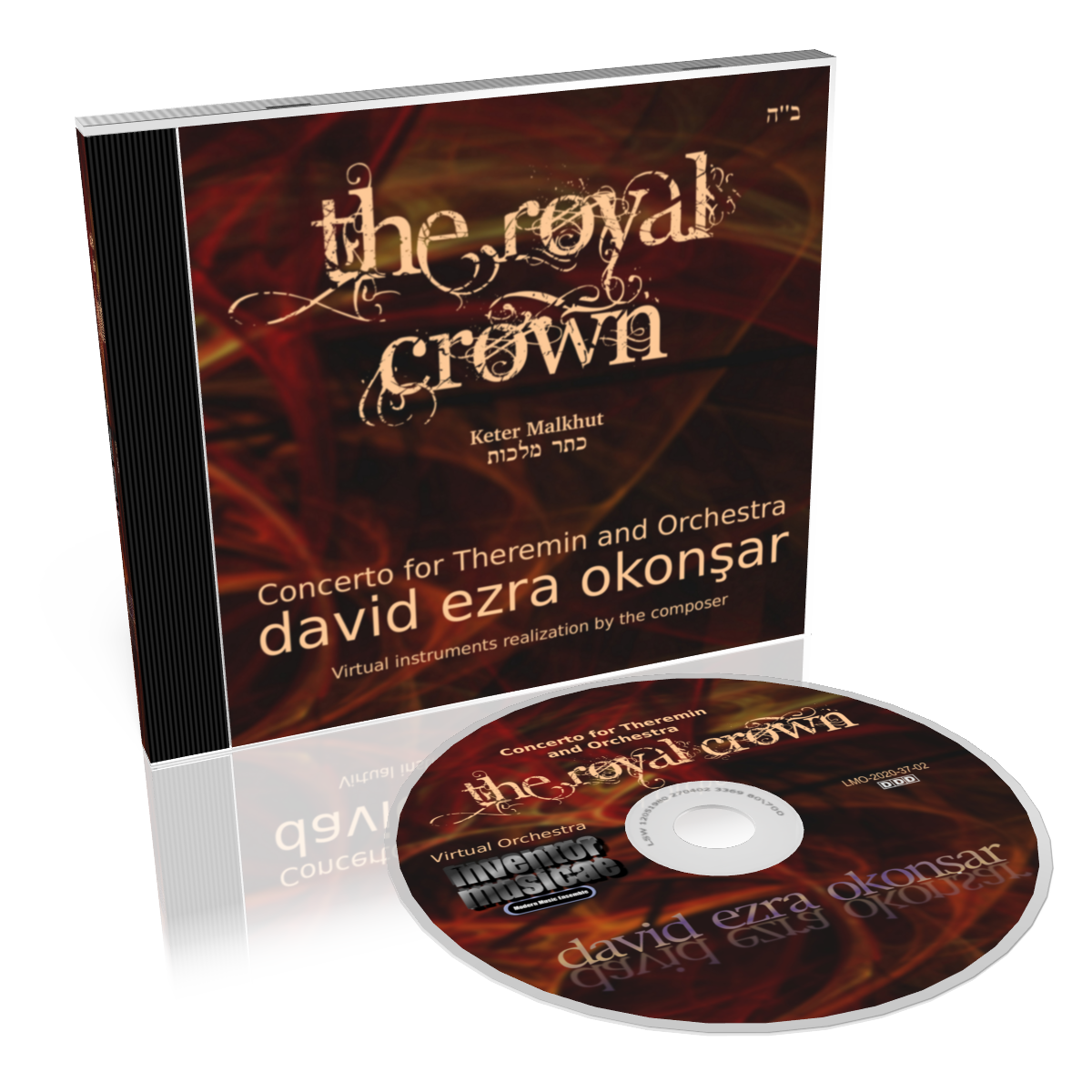"The Royal Crown"
(Keter Malkhut)
the virtual instruments CD
for composition details click here


|
The concerto for Theremin and orchestra, The Royal Crown (Keter Malkhut) is inspired by the series of poems by Solomon ibn Gabirol, an 11th-century Andalusian poet and Jewish philosopher with a Neo-Platonic tendency. The work does not follow specifically any poem or “programme” but it is strongly reflective of the poet's mystical, Kabbalistic and introspective style. And by the glory of this Thy name, every creature is bound to Thy service. Thou art God, and all things formed are Thy servants and worshipers. Yet is not Thy glory diminished by reason of those that worship aught beside Thee, For the yearning of them all is to draw nigh Thee, But they are like the blind, Setting their faces forward on the King’s highway, Yet still wandering from the path. (Part VIII) The concerto begins with the solo Theremin playing slowly an extended disclosure of the main note series. This series will be elaborated as the main motive of the entire work. Bowed cymbal and timpani abruptly strike in and both first and second violins divisi by 4 hold (without vibrato) a pianissimo "mother" chord of the main series while a solo violin spells out a shortened variant of it. After a short transition a smooth strings section development begins with mostly homophonic écriture. All throughout the concerto very long held notes at the Theremin part (i.e. pedal tones in both and high ranges), not possible to sustain on any acoustic instrument, are used widely. An animated section starts with the trumpet, almost heroic but it dissolves very fast into introspective. Small sections of the main series are used in a klangfarben type of melodic lines. Long cadenzas, with short orchestral inserts gradually dissolve the musical texture into contemplative mood. Short melodic fragments on woodwinds, often accompanied with held notes on the Theremin lead to a viola solo which closes the introspective sections of the first movement. Powerful tutti based on a leitmotive: C-D-F, which will be used later as C-E-flat-F it brings the high pitched solo accompanied by the entire orchestra which will close the movement. The staccato parts will also reappear at the end of the second movement. The first movement ends with an abrupt "precipitato" and similar cymbal sound at it started it connects to the following one. The second movement starts with soft string section polyphonies. The Theremin either hold pedal (drone) notes or sings at the high range. This quasi wandering section, mainly orchestrated with strings with short inserts of woodwinds will bring a dramatic climax and lend itself to a "Andalusian" type of texture with solo trumpet accompanied by soft timpani and harp. Often present is the staccato attacks of the bassoon. A real solo cadenza will lead to the movement's strongest tutti. This texture alternating between harsh held chords and strong staccatos features the staccato element which is ever present throughout the work. Soft strings polyphony of the beginning is jagged with the staccato attacks on harp, bassoon and xylophone. The movement ends without held notes and connects to the third movement. The regular chromatic series constitutes the basis of the third movement. It is elaborated as a scherzo, almost sarcastic. Extremely jagged structure which starts the last movement gradually dissolves into a more contemplative texture. The mid-range pedal note [C-sharp] at the Theremin is worth noting. This section leads to a key part of the movement based on the three notes motive [C - F - E-flat] which is the key element of the entire work. The cadenza of this movement is the most extended one in the Concerto. It uses many orchestral tone-colors like the Flute with flatterzunge, Trombone solo glissando melody, Double-bass solo flageolets. The Theremin launches the last animato section which recalls the beginning of the movement and brings the Timpani solo on those three notes motive. A short stretto in Prestissimo concludes the concerto.
|
||||||||||||||||||||
| |
||||||||||||||||||||
| |
||||||||||||||||||||
|
|
||||||||||||||||||||
|






